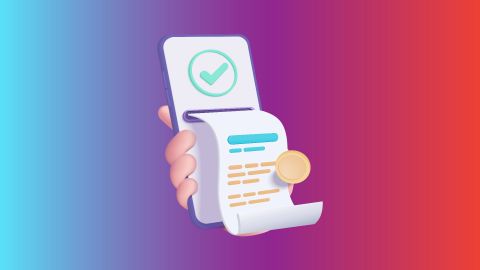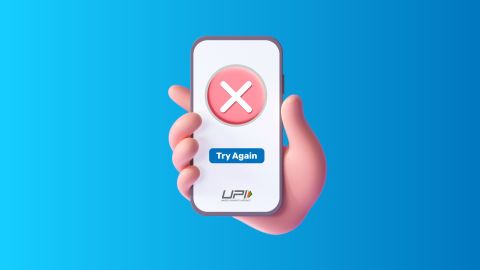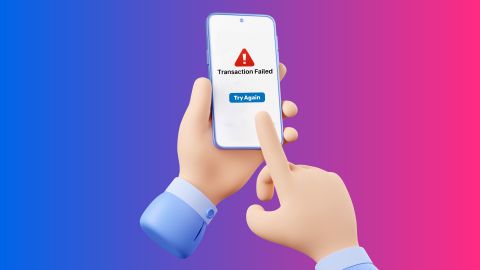Discover the benefits of optical fiber in this article, from its efficiency to durability and more. Plus, learn how to easily pay your Wi-Fi bills with Bajaj Pay for added convenience.
Benefits of optical fiber
-
Introduction to optical fibre technology
Optical fiber technology involves the use of thin strands of glass or plastic to transmit light signals over long distances. These fibers are designed to carry data in the form of light pulses, making them ideal for high-speed communication. The core of the fiber, surrounded by a cladding layer, utilises the principle of total internal reflection to keep light contained within the core.
This technology offers numerous advantages over traditional copper cables, including higher bandwidth and immunity to electromagnetic interference. Optical fibers are lightweight, flexible, and have lower signal degradation, which enhances their performance in telecommunications. They are widely used in internet services, telephone lines, and cable television. Additionally, optical fibers play a crucial role in medical imaging and military applications due to their ability to transmit data securely and efficiently.
Services like Bajaj Pay facilitate various transactions, including bill payments, making it easier for users to manage their finances on the go. Additionally, managing broadband bill payments online ensures seamless connectivity for users who depend on high-speed internet.Advantages of optical fibre
- High speed: Optical fibers offer faster data transmission compared to copper cables, enabling high-speed internet and communication services.
- Large bandwidth: They support significantly higher bandwidths, allowing more data to be transmitted simultaneously, which is ideal for media-rich applications.
- Low signal loss: Optical fibers experience less signal degradation over long distances, ensuring reliable communication even over extensive networks.
- Electromagnetic interference resistance: Unlike copper, optical fibers are immune to electromagnetic interference, enhancing signal integrity and security.
- Durability: Fiber optic cables are more resistant to environmental factors such as temperature changes and moisture, leading to lower maintenance costs.
- Lightweight and flexible: They are thinner and lighter than copper cables, making installation easier and more efficient.
- Long lifespan: Optical fibers can last over 100 years with minimal performance loss, providing a long-term solution for data transmission needs.
High-Speed Data transmission with optical fibre
Fiber optic technology has transformed high-speed data transmission. It utilises light pulses to send information, achieving speeds close to that of light. This method allows for faster and more efficient communication compared to traditional copper cables, which rely on electrical signals. Fiber optic cables are immune to electromagnetic interference, ensuring reliable data transfer without disruptions.
The large bandwidth capacity of fiber optics enables the simultaneous transmission of vast amounts of data. This capability is crucial for applications like high-definition video streaming and real-time communications. Additionally, fiber optics support long-distance transmission with minimal signal loss. As a result, they are ideal for telecommunications and internet services, meeting the growing demand for high-speed connectivity in various industries.Durability and longevity of optical fibre
Optical fibers are designed for durability and longevity, typically lasting 20 to 30 years under optimal conditions. Their lifespan can extend beyond this range if installed correctly and protected from environmental factors. Key elements affecting durability include the quality of materials, installation techniques, and exposure to moisture and physical damage.
Fiber optic cables are made from fused silica, which is inherently fragile but can be robust when properly processed. Surface flaws, such as micro-cracks, can reduce longevity if not addressed during manufacturing. Environmental conditions, including humidity and temperature variations, also play a crucial role in the fiber's lifespan.
While the fibers themselves may last decades, associated electronic components often require more frequent replacement. Regular maintenance and careful handling are essential to maximise the performance and lifespan of optical fiber networks.Energy efficiency in optical fibre cables
Optical fiber cables significantly enhance energy efficiency compared to traditional copper cables. They transmit data using light signals, which encounter minimal resistance. This results in lower power requirements—only 1 watt per 300 meters versus 3.5 watts per 100 meters for copper cables. This means fiber optics can reduce energy consumption by up to nine times.
Moreover, fiber optic cables are immune to electromagnetic interference, eliminating the need for energy-intensive signal regeneration equipment. Their lightweight and compact design also minimises installation complexity and space requirements, leading to further operational efficiencies.
Additionally, the durability of fiber optics reduces maintenance needs, contributing to long-term energy savings. Overall, adopting fiber optic technology supports sustainable practices in telecommunications by lowering both energy costs and environmental impact.Reduced signal loss in optical fibre networks
To reduce signal loss in optical fiber networks, several strategies can be implemented. High-quality fiber selection is crucial; using single-mode fibers minimises attenuation and dispersion, making them ideal for long distances. Optimised fiber design can also help, as larger core diameters and thinner cladding reduce scattering and absorption losses.
Effective signal amplification is essential. Incorporating optical amplifiers, like erbium-doped fiber amplifiers (EDFAs), boosts signal strength without adding noise. Additionally, precise splicing and connectorization ensure minimal losses at connection points. High-quality connectors and proper alignment are vital to avoid reflections that degrade signal integrity.
Lastly, proper cable routing is important. Avoiding excessive bending and protecting cables from environmental factors helps prevent microbending and macrobending losses. By combining these methods, optical networks can achieve better performance and reliability with reduced signal loss.Environmental benefits of optical fibre
Fiber optic technology offers significant environmental benefits, making it a sustainable choice for internet connectivity. Energy efficiency is a primary advantage, as fiber optic cables transmit data using light, consuming up to 70% less energy than traditional copper cables. This results in a lower carbon footprint and reduced greenhouse gas emissions during data transmission.
Moreover, fiber optics have a longer lifespan and are more durable, leading to fewer replacements and less waste. This durability minimises the need for maintenance, which reduces vehicle emissions from service calls. Additionally, fiber optic networks require less physical infrastructure, conserving resources and reducing habitat disruption.
By enabling remote work and digital solutions, fiber optics decrease the need for commuting, further cutting down on carbon emissions associated with transportation. Overall, adopting fiber optic technology supports a greener future by enhancing connectivity while promoting sustainability.Cost-effectiveness of optical fibre for Long-Term Uses
Optical fiber technology is a cost-effective solution for long-term use in telecommunications. Although the initial installation costs can be higher than traditional copper cables, the long-term savings are substantial. Fiber optic cables have a lifespan exceeding 30 years, reducing the need for frequent replacements and maintenance. They are also less susceptible to environmental factors, which minimise repair costs and downtime.
The superior bandwidth and speed of fiber optics allow businesses to handle increasing data demands without costly upgrades, making them future-proof. Additionally, fiber networks consume significantly less energy than copper systems, leading to lower operational costs and reduced carbon emissions. Overall, investing in optical fiber provides a reliable, scalable, and economically advantageous solution for modern connectivity needs.
Applications of optical fibre in modern communication
Optical fibers play a crucial role in modern communication systems. They are primarily used in telecommunication networks, enabling high-speed data transmission over long distances. This technology offers significant advantages over traditional copper wires, including higher bandwidth, which allows for more data to be transmitted simultaneously, and lower signal loss, making them ideal for internet connectivity and cable television.
In addition, optical fibers are essential in data centres, where they facilitate rapid data transfer between servers. Their immunity to electromagnetic interference ensures reliable communication, even in industrial settings. Furthermore, optical fibers support the development of smart cities and the Internet of things (IoT), providing the necessary infrastructure for connected devices. Overall, their efficiency and reliability make optical fibers indispensable in today's digital communication landscape.Future of optical fibre technology
The future of optical fiber technology is promising and dynamic. Increasing demand for high-speed internet drives innovations in fiber optics. As online activities like video streaming and gaming grow, the need for faster, more reliable connections becomes essential. 5G networks will further enhance this demand, requiring extensive fiber optic infrastructure for efficient data transmission.
Technological advancements are on the horizon, including new materials like graphene and silicon photonics, which could significantly boost data speeds. Innovations such as wavelength division multiplexing (WDM) and orbital angular momentum (OAM) are set to increase bandwidth and transmission efficiency.
Moreover, efforts to expand fiber networks into rural areas are underway, ensuring broader access to high-speed internet. With continued investment and research, optical fiber technology is poised to remain at the forefront of telecommunications, enabling a more connected future.Steps to pay your wi-fi online on the Bajaj Finserv website
Follow these steps to pay your wi-fi bill online on the Bajaj Finserv website:
1. Visit the Bajaj Finserv website
2. Click on the ‘PAYMENTS’ section and select ‘ALL PAYMENTS’
3. Choose ‘BROADBAND POSTPAID’ from the available options
4. Select your provider
5. Enter your user ID to fetch your bill
6. Choose your preferred payment method (Bajaj Pay, UPI, debit/credit card, net banking)
7. Confirm the payment and receive an instant confirmationSteps to pay wi-fi bill online on the Bajaj Finserv App
Follow these steps to pay your wi-fi bill online on the Bajaj Finserv App:
1. Open the Bajaj Finserv App on your phone
2. Go to ‘BILLS AND RECHARGES’ and select ‘BROADBAND’
3. Choose your provider
4. Enter your user ID to fetch your bill
5. Select your payment method and confirm the transaction
6. You will receive an instant confirmation once the payment is successfulFees and charges
A convenience fee of up to 2% will be charged depending on the transaction amount and payment mode (inclusive of applicable taxes). For more information on fees and charges, click here.
Note: For failed transactions, the total amount including charges except taxes are reversed.Conclusion: The impact of optical fibre
The impact of optical fiber technology is profound and far-reaching. It has revolutionised telecommunications by enabling high-speed data transmission over long distances. Optical fibers transmit information as light pulses, which result in a significantly higher bandwidth compared to traditional copper cables. This technology supports faster internet connections, essential for modern communication, streaming, and online services.
Moreover, optical fibers are less susceptible to electromagnetic interference, ensuring clearer signals and greater reliability. They also have a longer lifespan and reduced signal degradation, making them a cost-effective solution for data transmission. Additionally, the lightweight and flexible nature of optical fibers allows for easier installation in various environments. Overall, optical fiber technology has become the backbone of the internet and is crucial for advancements in various sectors, including education, healthcare, and business.
-
Recharge and Pay Bills
Mobile Prepaid
Mobile Postpaid
Broadband Bill Payment
Electricity Bill Payment
Bajaj Finserv App for All Your Financial Needs and Goals
Trusted by 50 million+ customers in India, Bajaj Finserv App is a one-stop solution for all your financial needs and goals.
You can use the Bajaj Finserv App to:
Apply for loans online, such as Instant Personal Loan, Home Loan, Business Loan, Gold Loan, and more.
Explore and apply for co-branded credit cards online.
Invest in fixed deposits and mutual funds on the app.
Choose from multiple insurance for your health, motor and even pocket insurance, from various insurance providers.
Pay and manage your bills and recharges using the BBPS platform. Use Bajaj Pay and Bajaj Wallet for quick and simple money transfers and transactions.
Apply for Insta EMI Card and get a pre-approved limit on the app. Explore over 1 million products on the app that can be purchased from a partner store on Easy EMIs.
Shop from over 100+ brand partners that offer a diverse range of products and services.
Use specialised tools like EMI calculators, SIP Calculators
Check your credit score, download loan statements and even get quick customer support—all on the app.
Download the Bajaj Finserv App today and experience the convenience of managing your finances on one app.
You can use the Bajaj Finserv App to:
Apply for loans online, such as Instant Personal Loan, Home Loan, Business Loan, Gold Loan, and more.
Explore and apply for co-branded credit cards online.
Invest in fixed deposits and mutual funds on the app.
Choose from multiple insurance for your health, motor and even pocket insurance, from various insurance providers.
Pay and manage your bills and recharges using the BBPS platform. Use Bajaj Pay and Bajaj Wallet for quick and simple money transfers and transactions.
Apply for Insta EMI Card and get a pre-approved limit on the app. Explore over 1 million products on the app that can be purchased from a partner store on Easy EMIs.
Shop from over 100+ brand partners that offer a diverse range of products and services.
Use specialised tools like EMI calculators, SIP Calculators
Check your credit score, download loan statements and even get quick customer support—all on the app.
Download the Bajaj Finserv App today and experience the convenience of managing your finances on one app.
Frequently asked questions
What are the primary benefits of optical fibre over traditional cables?
Optical fiber offers several key advantages over traditional copper cables. Firstly, it provides higher bandwidth, allowing for greater data transmission capacity. Secondly, optical fibers support longer distances without significant signal loss, making them ideal for extensive networks. Lastly, they are immune to electromagnetic interference, ensuring reliable communication even in challenging environments.
How does optical fibre support high-speed internet?
Optical fiber supports high-speed internet by transmitting data as light pulses, which travel at nearly the speed of light. This enables extremely high data rates, often exceeding 100 Gbps. Additionally, optical fibers have low attenuation, meaning they can maintain signal quality over long distances without the need for frequent repeaters or boosters. This combination results in fast and stable internet connections.
Is optical fibre more durable than copper cables?
Yes, optical fiber is generally more durable than copper cables. It is less susceptible to environmental factors such as moisture and temperature fluctuations, which can degrade copper performance. Additionally, fiber optic cables are lighter and thinner, making them easier to install and less prone to physical damage during handling. Their longevity often exceeds that of copper cables.
How does the installation process differ between optical fibre and copper cables?
The installation process for optical fiber is typically more complex due to the need for specialised tools and techniques to handle the delicate fibers. However, once installed, fiber optic systems require less maintenance compared to copper systems, which may need frequent checks for wear and tear.
Are there any disadvantages to using optical fibre?
While optical fiber has many advantages, it also has some drawbacks. It can be more expensive to install initially compared to copper cables, and the fibers are fragile, requiring careful handling during installation. Additionally, fiber optic cables do not carry electrical power like copper cables, limiting their use in certain applications.
Show More
Show Less




